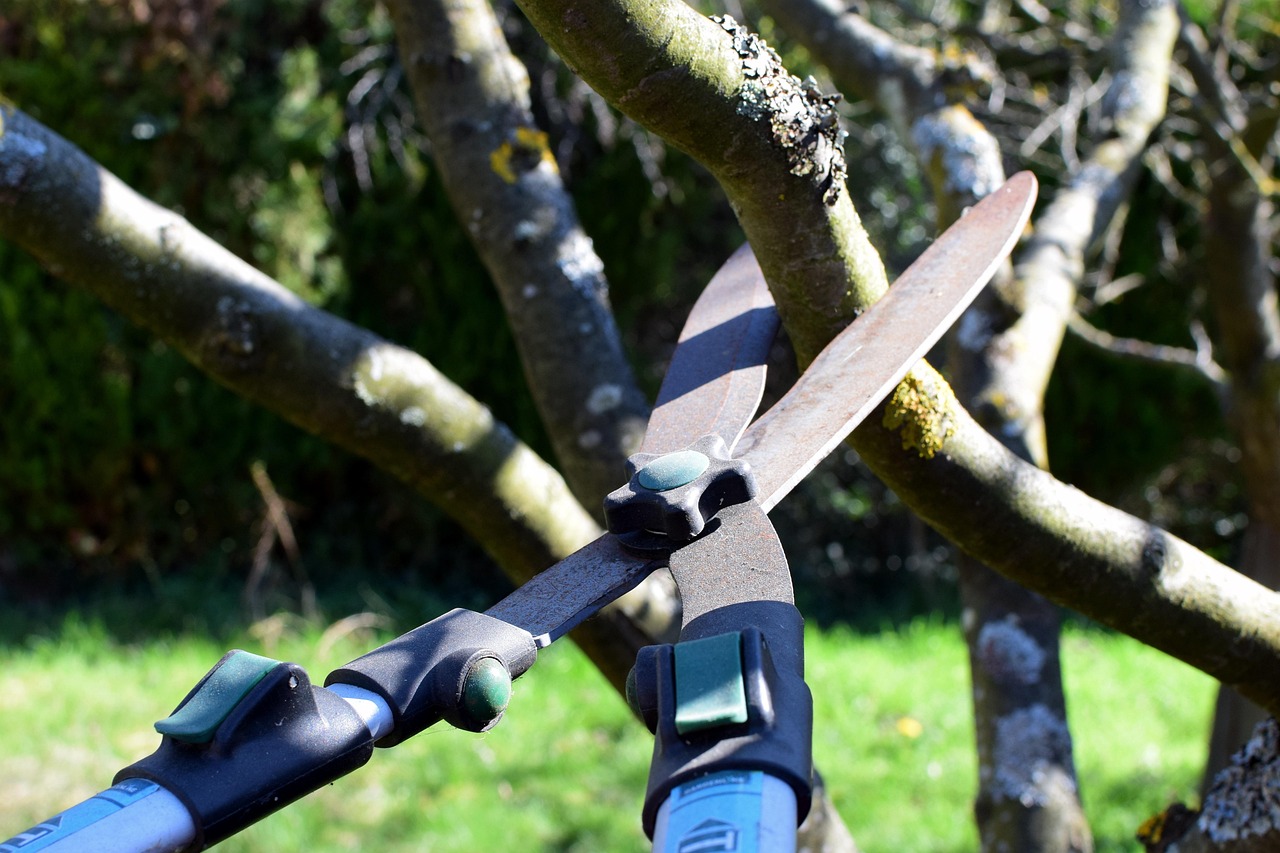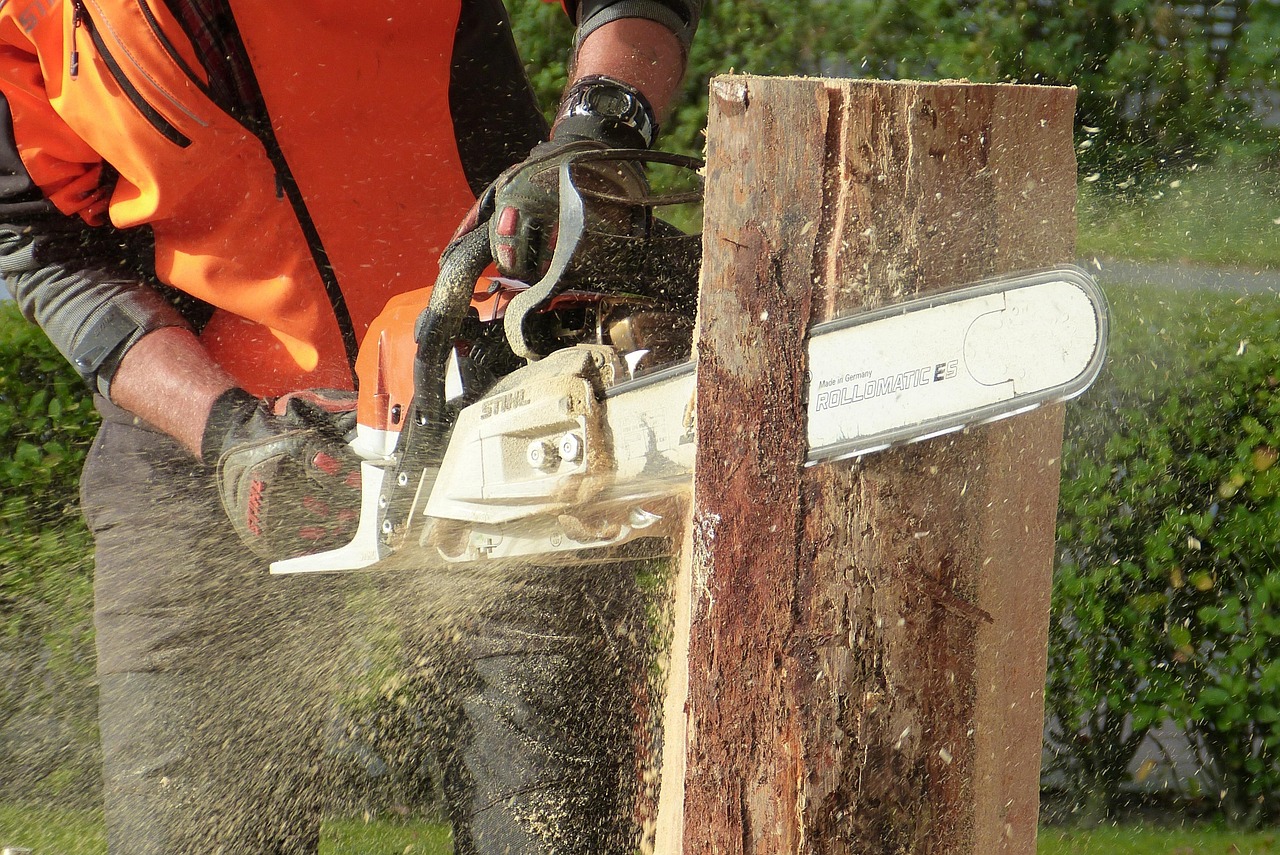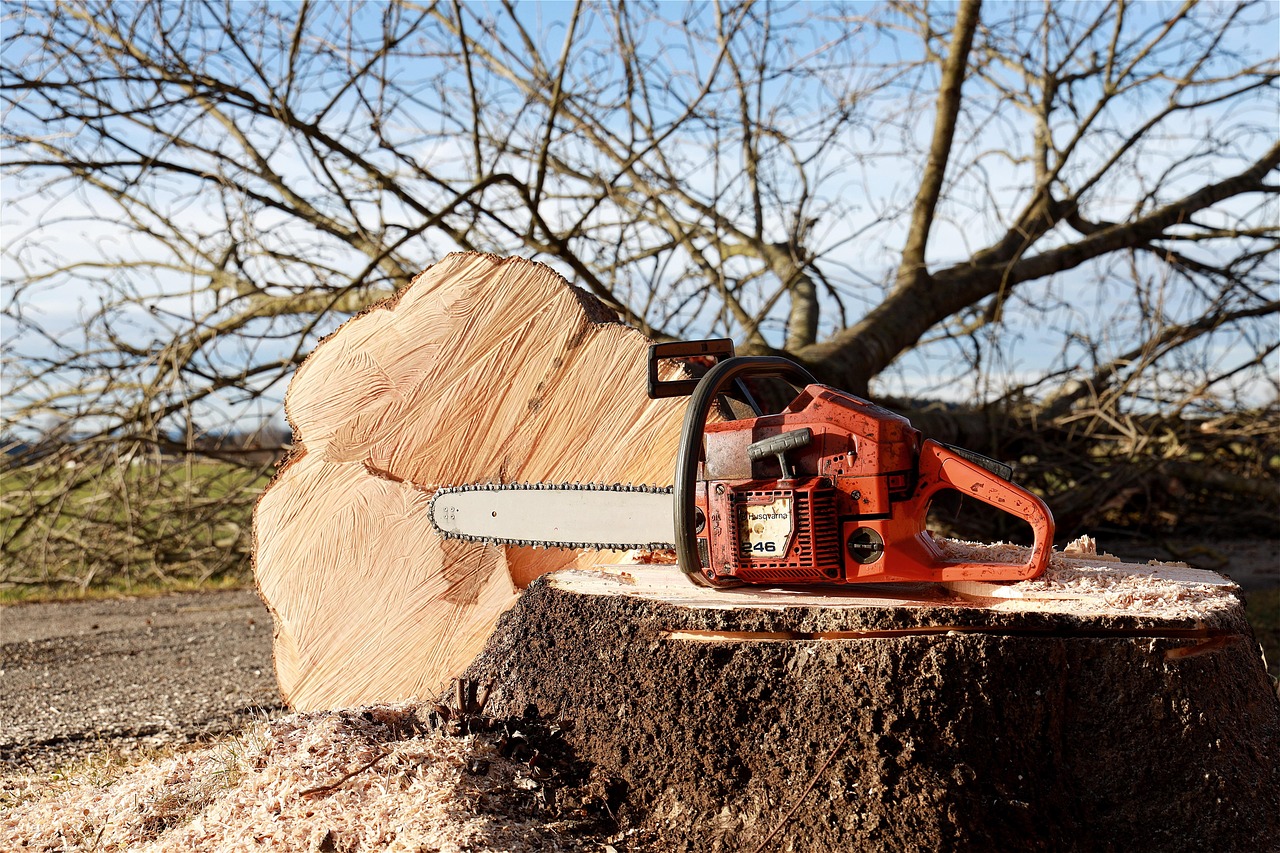Tree pruning accessories for DIY gardeners include a range of tools designed to make the pruning process effective and efficient. Essential items like pruning shears, loppers, and saws help manage tree health, promote growth, and enhance aesthetics.
For many gardening enthusiasts, tree pruning can seem daunting. However, with the right accessories, it can become an enjoyable and rewarding task. Pruning is essential for maintaining healthy trees and shrubs. It encourages new growth, removes dead or diseased branches, and improves the overall appearance of your landscape. Understanding which tools are necessary can greatly enhance your gardening experience.

When considering tree pruning accessories, it’s important to know the types of tools available and their specific functions. Each tool has its own purpose and is designed for different sizes of branches and levels of difficulty. Below is a brief overview of some commonly used tree pruning accessories:
| Tool | Description | Best Use |
|---|---|---|
| Pruning Shears | Handheld scissors for small branches. | Ideal for cutting stems up to ¾ inch thick. |
| Loppers | Larger, two-handed tools for thicker branches. | Perfect for branches ¾ inch to 2 inches thick. |
| Pruning Saws | Saws designed specifically for cutting wood. | Useful for branches larger than 2 inches thick. |
| Pole Pruners | Long-reach tools that allow cutting from the ground. | Effective for high branches without a ladder. |
Essential Tree Pruning Accessories
Understanding the essential accessories for tree pruning is crucial for any DIY gardener. Each tool serves a unique purpose and can significantly impact the effectiveness of your pruning efforts.
Pruning shears are often the first tool that comes to mind. They are perfect for small tasks such as trimming dead leaves or shaping young trees. When selecting pruning shears, look for those that are comfortable to hold and easy to operate. Quality shears will have sharp blades that make clean cuts, reducing damage to the plant.

Loppers are another vital accessory in a gardener’s toolkit. These come with long handles that provide extra leverage when cutting thicker branches. Their design allows you to exert more force without straining your hands or wrists. For gardeners tackling larger trees or thicker shrubbery, loppers are indispensable.
For branches that exceed 2 inches in thickness, a pruning saw becomes necessary. These saws are designed specifically for tree work, featuring sharp teeth that cut through wood efficiently. When using a pruning saw, ensure you maintain proper technique to avoid accidents and achieve clean cuts. Always opt for a saw that fits comfortably in your hand and allows for smooth movement.
Pole pruners are a fantastic addition for those who need to reach high branches without using a ladder. These tools come with extendable poles that can reach significant heights. Some models may even feature a cutting blade at the end, allowing you to prune high branches safely from the ground. This accessory is particularly beneficial for maintaining fruit trees or ornamental trees where access might be challenging.

In addition to these primary tools, several other accessories can enhance your pruning experience:
- Gloves: Protect your hands from cuts and scrapes while providing a better grip on tools.
- Safety Glasses: Safeguard your eyes from falling debris while pruning.
- Tool Belt: Keep your tools organized and within reach while you work.
- Cleaning Supplies: Maintain your tools by cleaning blades after use to prevent rust and disease spread.
By equipping yourself with the right tree pruning accessories, you set yourself up for success in your gardening endeavors. Not only will these tools make the job easier, but they will also ensure that your trees remain healthy and vibrant throughout the seasons.
As you dive deeper into tree care, consider the specific needs of your garden and trees. Investing in quality accessories tailored to your gardening style can lead to better results and a more satisfying experience overall.

Choosing the Right Pruning Tools
Selecting the right pruning tools is crucial for effective tree maintenance. With numerous options available, understanding their specific functions and benefits can help you make informed decisions. Each type of tool is designed for particular tasks, ensuring that your gardening efforts are efficient and productive.
Factors to Consider When Selecting Tools
When choosing pruning tools, several factors should guide your decision:
- Branch Thickness: Assess the size of branches you will be cutting. Different tools cater to varying thicknesses.
- Comfort and Ergonomics: Choose tools that fit comfortably in your hands. Ergonomic designs can minimize strain during prolonged use.
- Weight: Consider the weight of the tools, especially if you will be using them for extended periods.
- Durability: Look for tools made from high-quality materials that can withstand regular use without degrading.
- Maintenance: Some tools require more upkeep than others. Choose ones that are easy to clean and maintain.
Popular Pruning Tool Brands
Several reputable brands offer high-quality pruning tools. Here are some popular choices among DIY gardeners:
| Brand | Description | Notable Products |
|---|---|---|
| Felco | A Swiss company known for precision and durability. | Felco 2 Classic Pruning Shears |
| Bahco | Renowned for ergonomic designs and effective cutting. | Bahco P126 Lopper |
| Corona | Offers a wide range of gardening tools with a focus on quality. | Corona RS 7265D Bypass Pruner |
| Gardena | A German brand known for innovative garden equipment. | Gardena Comfort Pruning Saw |
Maintenance of Pruning Tools
Regular maintenance of your pruning tools is essential for their longevity and performance. Proper care ensures that they remain sharp and functional, which in turn enhances your pruning efficiency.
Basic Maintenance Tips
Here are some simple tips to keep your pruning tools in excellent condition:
- Cleaning: After each use, wipe down the blades with a clean cloth to remove sap and debris. This helps prevent rust and keeps blades sharp.
- Sharpening: Regularly sharpen the blades using a sharpening stone or tool. Sharp blades make cleaner cuts, which are better for plant health.
- Oiling: Apply a light oil to the moving parts of the tools to prevent rust and ensure smooth operation. Use vegetable oil or specific tool oils for best results.
- Storage: Store tools in a dry place. Hanging them or placing them in a toolbox can prevent damage and keep them organized.
Recognizing When to Replace Tools
No matter how well you maintain your pruning tools, there comes a time when replacement is necessary. Here are signs that it may be time to invest in new equipment:
- The blades have significant nicks or chips, affecting cutting performance.
- The handles are cracked or broken, making the tool uncomfortable or unsafe to use.
- The tool is not functioning as effectively as it used to, even after sharpening and maintenance.
- Parts of the tool have rusted beyond simple cleaning or repair.
Advanced Pruning Techniques
Once you have acquired the right tools and understand basic maintenance, you can explore advanced pruning techniques. These methods can enhance your gardening skills and lead to healthier trees and shrubs.
Crown Thinning
Crown thinning involves selectively removing branches to increase light penetration and air circulation within the tree’s canopy. This technique promotes overall tree health and encourages growth. When practicing crown thinning, consider the following:
- Select branches that are crossing or rubbing against each other.
- Aim to maintain the natural shape of the tree while removing unwanted branches.
- Always cut at the branch collar to promote healing and reduce stress on the tree.
Crown Raising
Crown raising is a technique used to remove lower branches from a tree. This is often done to improve visibility, reduce hazards, or create space for other plants. When performing crown raising:
- Focus on removing dead or low-hanging branches first.
- Avoid removing more than one-third of the lower branches in a single season.
- Ensure cuts are made cleanly to promote quick healing and prevent disease.
By understanding how to choose, maintain, and utilize your pruning tools effectively, you can enhance your gardening experience and ensure your trees remain healthy and vibrant. Developing these skills will empower you to tackle various tree management tasks with confidence.
Seasonal Pruning Considerations
Pruning trees and shrubs is not just about the tools you use; timing and seasonal considerations play a crucial role in achieving the best results. Different trees and plants have specific growth cycles, and understanding these can help you decide when to prune for optimal health and appearance.
Best Times to Prune
The timing of your pruning efforts can significantly affect the results. Here are some general guidelines for when to prune:
- Late Winter to Early Spring: This is often the best time for most deciduous trees. Pruning during dormancy promotes vigorous growth in the spring.
- After Flowering: For flowering trees and shrubs, prune immediately after they bloom. This allows you to enjoy the flowers while ensuring that new growth can develop for the next season’s blooms.
- Autumn: While it’s not ideal for many trees, some evergreens can benefit from light pruning in fall. Avoid heavy pruning late in the season as it can stimulate new growth that won’t harden off before winter.
- Summer Pruning: This is useful for shaping and controlling the size of trees and shrubs. It can also help manage excessive growth in certain species.
Species-Specific Pruning Guidelines
Different species of trees and shrubs have varying needs when it comes to pruning. Understanding these specific requirements can enhance your gardening efforts:
| Plant Type | Best Pruning Time | Special Considerations |
|---|---|---|
| Fruit Trees | Late Winter to Early Spring | Focus on thinning for air circulation. |
| Flowering Shrubs (spring) | Immediately after flowering | Remove spent blooms to encourage new growth. |
| Deciduous Trees | Late Winter | Avoid heavy pruning of young trees. |
| Evergreens | Late Winter or Early Spring | Light shaping and maintenance pruning. |
Safety Precautions While Pruning
Safety should always be a priority when engaging in tree pruning. The tools used can pose risks, and working at heights can lead to accidents. Here are some essential safety precautions to consider:
Personal Protective Equipment (PPE)
Using appropriate personal protective equipment can help prevent injuries:
- Gloves: Wear sturdy gloves to protect your hands from sharp tools and rough branches.
- Safety Glasses: Protect your eyes from flying debris and branches while cutting.
- Hard Hats: If working near large trees, a hard hat can prevent injuries from falling branches.
- Sturdy Footwear: Wear closed-toe shoes with good grip to support safe movement on uneven ground.
Working at Heights
If your pruning tasks require a ladder or climbing, follow these safety tips:
- Use a Stable Ladder: Ensure your ladder is on stable ground and extends at least three feet above the point of support.
- Have a Spotter: If possible, have someone hold the ladder while you work, providing an extra layer of safety.
- Avoid Overreaching: Maintain your center of balance and avoid leaning too far to one side.
- Avoid Working Alone: It’s wise to have someone nearby in case of emergencies.
Common Pruning Mistakes to Avoid
Avoiding common mistakes can make your pruning efforts more effective. Here are some pitfalls to watch out for:
- Over-Pruning: Removing too much foliage can stress the tree and impede its growth. Stick to removing no more than 20-30% of a tree’s foliage at a time.
- Poor Timing: Pruning at the wrong time can hinder growth or lead to disease. Always consider the best season for your specific tree species.
- Improper Cuts: Making cuts too close to the trunk or leaving stubs can damage the tree. Always cut at a slight angle just outside the branch collar.
- Lack of Planning: Before starting, assess the tree’s structure. Have a clear plan for which branches to remove to maintain the tree’s natural shape.
By taking into account seasonal considerations, safety measures, and avoiding common mistakes, you can enhance your tree pruning skills. Developing this knowledge will not only improve your gardening practices but also contribute to the overall health and beauty of your landscape.
Additional Resources for DIY Gardeners
As you embark on your tree pruning journey, having access to reliable resources can enhance your knowledge and skills. Here are some additional resources that can help you further improve your pruning techniques and gardening practices:
- Online Courses: Many gardening and horticulture organizations offer online courses covering the fundamentals of tree care, including pruning techniques.
- YouTube Tutorials: Numerous gardening channels provide visual demonstrations of pruning techniques, making it easier to grasp the concepts.
- Books: Consider reading books such as “Pruning Made Easy” by Lewis Hill and “The Pruning Book” by Lee Reich for in-depth information.
- Local Gardening Clubs: Joining a gardening club can connect you with experienced gardeners who can share tips and advice.
- Extension Services: Many universities offer cooperative extension services that provide free resources and educational materials on tree care and pruning.
Environmental Considerations in Pruning
As a DIY gardener, it’s also essential to consider the environmental impact of your pruning activities. Responsible tree care not only benefits your garden but also supports local ecosystems. Here are some eco-friendly practices to adopt:
- Use Organic Methods: Whenever possible, avoid chemical pesticides and fertilizers. Opt for natural alternatives to promote healthy plant growth.
- Waste Reduction: Instead of discarding pruned branches and leaves, consider composting them to enrich your garden soil.
- Wildlife Consideration: Be mindful of nesting birds and other wildlife when pruning. Avoid cutting during the breeding season to protect these animals.
- Diversity Promotion: Encourage biodiversity in your garden by planting a variety of species. This can create a balanced ecosystem that supports pollinators and other beneficial organisms.
Types of Trees and Their Pruning Needs
Understanding the specific pruning needs of different tree types is vital for effective care. Here are some common tree types and their general pruning requirements:
| Tree Type | Pruning Needs | Additional Notes |
|---|---|---|
| Maple | Prune in late winter to avoid sap loss. | Avoid heavy pruning, as it can lead to stress. |
| Oak | Best pruned in late summer or early fall. | Avoid pruning in spring due to oak wilt disease. |
| Pine | Light trimming can be done in spring. | Avoid excessive cutting, as it can affect growth. |
| Cherry | Prune after blooming to encourage fruit production. | Be cautious of diseases that affect cherry trees. |
Final Thoughts
Tree pruning is an essential skill for DIY gardeners. With the right tools, techniques, and knowledge, you can enhance the health and beauty of your trees while enjoying the process. Remember that each tree species has unique requirements, so it’s important to tailor your approach accordingly. By considering seasonal factors, safety measures, and environmental impacts, you can make informed decisions that benefit both your garden and the local ecosystem.
Your journey into tree pruning will not only improve the aesthetic appeal of your landscape but also foster a deeper connection to nature. Embrace the learning process, seek out resources, and engage with fellow gardeners. As you gain experience, you’ll find that tree pruning becomes an enjoyable and rewarding aspect of your gardening endeavors.
With the right knowledge and accessories at your disposal, you are well on your way to becoming a proficient gardener capable of nurturing healthy trees. Happy pruning!
